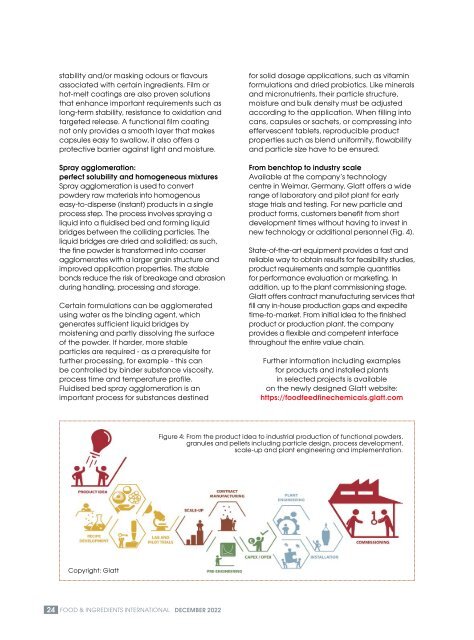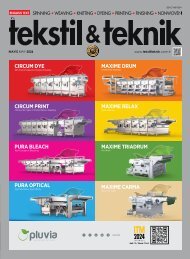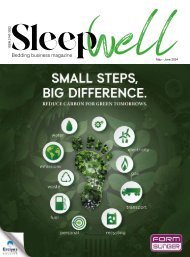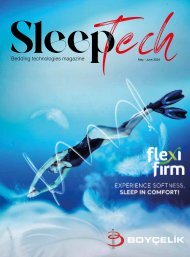Food & ingredients December 2022
You also want an ePaper? Increase the reach of your titles
YUMPU automatically turns print PDFs into web optimized ePapers that Google loves.
stability and/or masking odours or flavours<br />
associated with certain <strong>ingredients</strong>. Film or<br />
hot-melt coatings are also proven solutions<br />
that enhance important requirements such as<br />
long-term stability, resistance to oxidation and<br />
targeted release. A functional film coating<br />
not only provides a smooth layer that makes<br />
capsules easy to swallow, it also offers a<br />
protective barrier against light and moisture.<br />
Spray agglomeration:<br />
perfect solubility and homogeneous mixtures<br />
Spray agglomeration is used to convert<br />
powdery raw materials into homogenous<br />
easy-to-disperse (instant) products in a single<br />
process step. The process involves spraying a<br />
liquid into a fluidised bed and forming liquid<br />
bridges between the colliding particles. The<br />
liquid bridges are dried and solidified; as such,<br />
the fine powder is transformed into coarser<br />
agglomerates with a larger grain structure and<br />
improved application properties. The stable<br />
bonds reduce the risk of breakage and abrasion<br />
during handling, processing and storage.<br />
Certain formulations can be agglomerated<br />
using water as the binding agent, which<br />
generates sufficient liquid bridges by<br />
moistening and partly dissolving the surface<br />
of the powder. If harder, more stable<br />
particles are required - as a prerequisite for<br />
further processing, for example - this can<br />
be controlled by binder substance viscosity,<br />
process time and temperature profile.<br />
Fluidised bed spray agglomeration is an<br />
important process for substances destined<br />
for solid dosage applications, such as vitamin<br />
formulations and dried probiotics. Like minerals<br />
and micronutrients, their particle structure,<br />
moisture and bulk density must be adjusted<br />
according to the application. When filling into<br />
cans, capsules or sachets, or compressing into<br />
effervescent tablets, reproducible product<br />
properties such as blend uniformity, flowability<br />
and particle size have to be ensured.<br />
From benchtop to industry scale<br />
Available at the company’s technology<br />
centre in Weimar, Germany, Glatt offers a wide<br />
range of laboratory and pilot plant for early<br />
stage trials and testing. For new particle and<br />
product forms, customers benefit from short<br />
development times without having to invest in<br />
new technology or additional personnel (Fig. 4).<br />
State-of-the-art equipment provides a fast and<br />
reliable way to obtain results for feasibility studies,<br />
product requirements and sample quantities<br />
for performance evaluation or marketing. In<br />
addition, up to the plant commissioning stage,<br />
Glatt offers contract manufacturing services that<br />
fill any in-house production gaps and expedite<br />
time-to-market. From initial idea to the finished<br />
product or production plant, the company<br />
provides a flexible and competent interface<br />
throughout the entire value chain.<br />
Further information including examples<br />
for products and installed plants<br />
in selected projects is available<br />
on the newly designed Glatt website:<br />
https://foodfeedfinechemicals.glatt.com<br />
Figure 4: From the product idea to industrial production of functional powders,<br />
granules and pellets including particle design, process development,<br />
scale-up and plant engineering and implementation.<br />
Copyright: Glatt<br />
24 FOOD & INGREDIENTS INTERNATIONAL DECEMBER <strong>2022</strong>

















